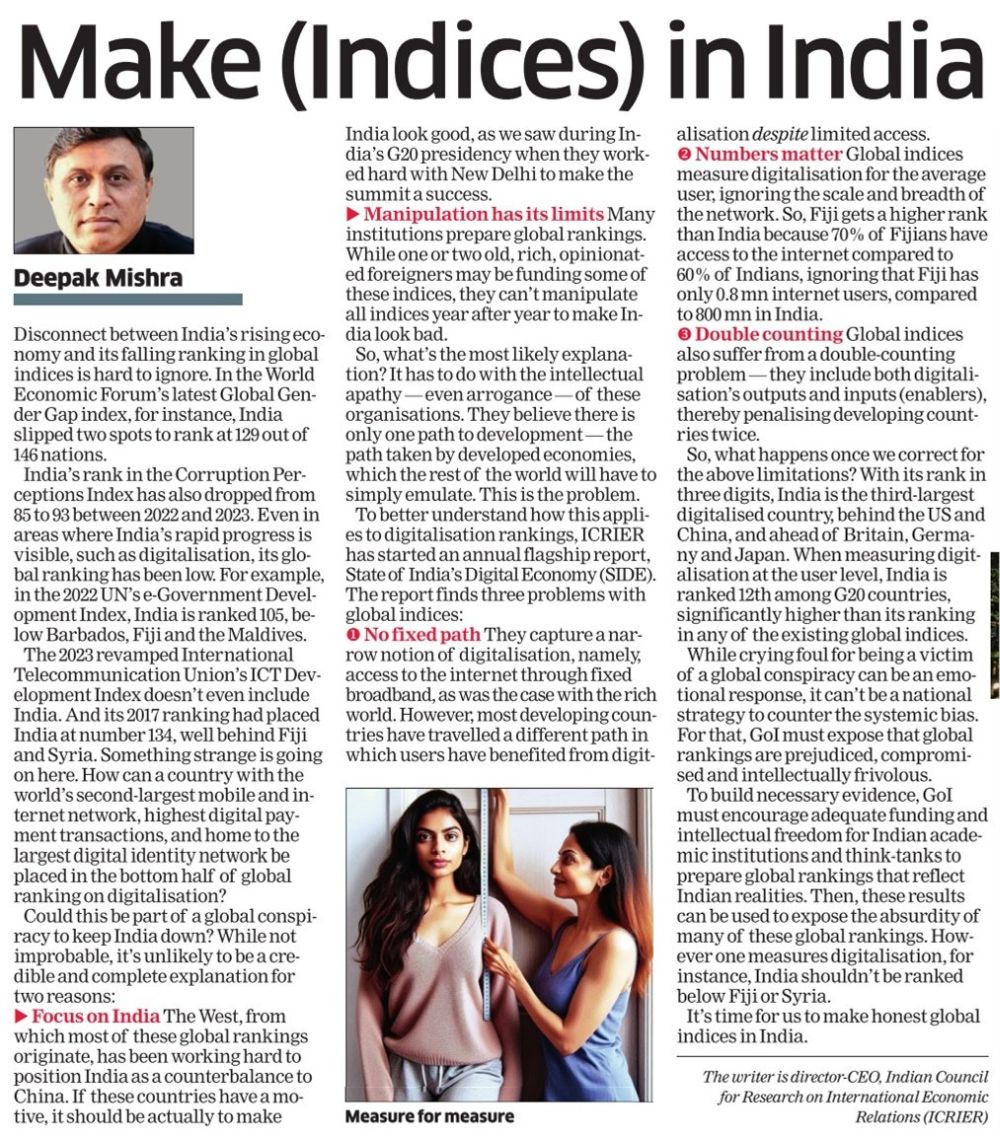India has 800 million Internet users. Fiji has 0.8 million Internet users. Still the latest global digitalization index ranks India below Fiji because 70% of Fiji nationals have access to the Internet as against 60% of Indians. This is absurd, as Deepak Mishra says in his op-ed titled “Make (Indices) in India” in the Economic Times dated 20 June 2024.
However, index building organizations are stuck in their ways and it’s futile to make them accept that there are many ways to skin the proverbial cat.
Therefore, I totally agree with the author that the only solution is to make global indexes in India.
In fact, I came to the same conclusion many years ago and made a similar recommendation to my alma mater IIT Bombay.
The standard QS World University Rankings, on which IIT Bombay is rated #150 or so, gives a high weightage to R&D, number of papers published, and so on.
Research might be a suitable yardstick to measure performance of universities in mature markets that have very less scope to grow by doing existing things, and desperately need to find new things to do.
 However, a developing nation like India offers a massive headroom for growth by localizing existing technologies.
However, a developing nation like India offers a massive headroom for growth by localizing existing technologies.
As I argued in Copy-Paste Of Western Business Model Works, localization has worked wonderfully in rideshare, mobile wallet, food delivery, BNPL, room renting, ecommerce, and many other industries in India.
I’m not alone. T K Arun expressed similar views in his op-ed entitled Innovate, Not Copy-Paste in Economic Times dated 29 May 2024.
Another important point to note is that innovation is not invention.
“Innovation” has a new, first-of-its-kind feel. But most stakeholder value comes from copying or stealing other firms’ great ideas, improving them, putting more wood behind the arrow, or placing it on broader platforms – @profgalloway via Let’s Get Ready To Rundle.
India can innovate in many ways without having to do fundamental research or publish papers. I reckon this approach can take India up to a GDP of $10 trillion.
That’s not to say I’m against indexes in general, just somebody else’s indexes.
It’s a fool’s errand to try to cross someone else’s bar. For all we know, once we get too close to the finishing line, they just might move the goal post, leaving us back in square one.
The smart move for India is to construct new indexes that are more suited for India’s current needs and position them as an alternative to existing indexes created by organizations that are beset with “intellectual apathy – even arrogance”, as Deepak Mishra rightly observes.
Of course, building an index alone will not be enough. As ISRO learned to its dismay, just building cheap rockets does not ensure that satellite launching customers will automatically come. Nobody will give any credence to the new homegrown indexes if India is the only country using them. It would be necessary to market these indexes worldwide and gain adoption among other countries that share similar emerging market dynamics as India.
A condensed version of the above post was published by Economic Times in its edition dated 21 June 2024.

In case the op-ed referenced in the above post not available online or is paywalled, cf. following exhibit.


